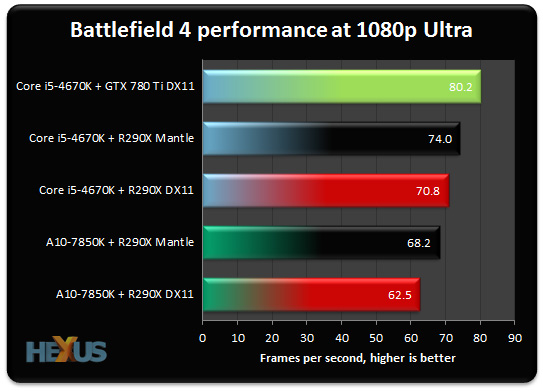Another possible data point in the discussion:
http://www.youtube.com/watch?feature=player_detailpage&v=JTWkpnbdROg#t=174
Note the variation in CPU load for the DX case and compare it to Mantle.
It looks like DX causes greater fluctuations.
Whether or not this affects apparent smoothness is another question.
http://www.youtube.com/watch?feature=player_detailpage&v=JTWkpnbdROg#t=174
Note the variation in CPU load for the DX case and compare it to Mantle.
It looks like DX causes greater fluctuations.
Whether or not this affects apparent smoothness is another question.



